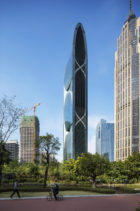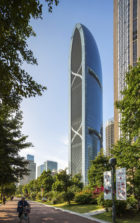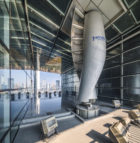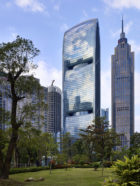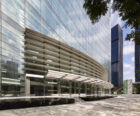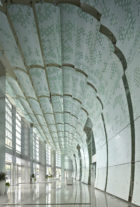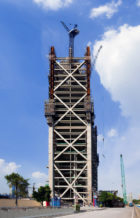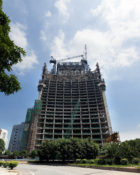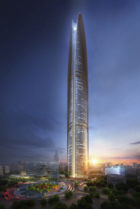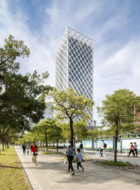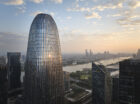Aiming high
This aerodynamic 71-story tower in Guangzhou’s Tianhe District is the result of careful site research that incorporated the latest green technology and engineering advancements in order to harvest wind and solar energy. Awarded the project through a design competition, SOM’s team set out to create one of the world’s most energy-efficient skyscrapers.
